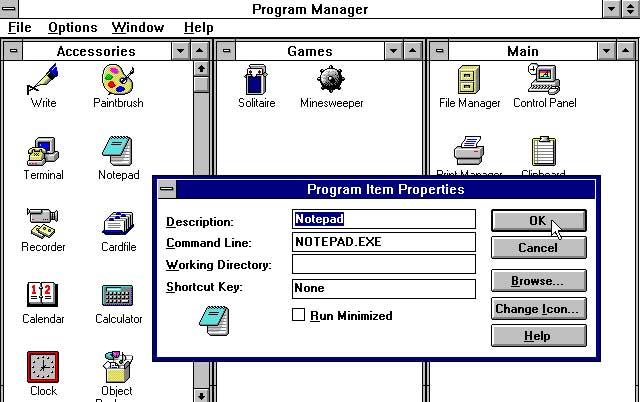At this point it is not necessary to point out that Windows is one of the great software projects of recent decades. Not in vain is it the most used operating system on desktop computers, and things do not seem to be changing anytime soon.
There are versions of Windows that have been enormously successful, while others have gone completely unnoticed or have simply caused rejection. There are also those that marked an era due to their technological innovations in the past. For example, this is the case of the software on which we want to focus on these lines. Specifically, we are referring to Windows 3.1, which has just celebrated its 32nd anniversary since its launch back in 1992, specifically in the month of April.
Although its version number might initially seem like just another update to us, it was actually much more important than it seems at first.
News that Windows 3.1 brought to computers
To begin with, we will tell you that this version of Windows needed at least an Intel 286 processor that came with one megabyte of RAM. That is to work, although as usual, to work fluently it was preferable to exceed those hardware specifications. In addition, it is also worth noting that it was a much more stable and reliable version of Windows than the previous Windows 3.0, hence its great acceptance by the public.
At the same time, support for CGA displays has already been removed here, although the Color Graphics Adapter driver from the previous Windows 3.0 would still work. It’s also worth noting that Microsoft added support for TrueType fonts. This basically allowed Windows programs to use scalable fonts.
In addition, here we could now drag and drop icons between windows, and users found a much more functional and attractive interface. Let’s not forget that one of the strong points of this Windows 3.1 lies in the improvements in terms of its user interface and how we could interact with it.
Until now we were used to operating systems being distributed through floppy disks. It is worth noting that Windows 3.1 was the first to be available in its CD version to install on the PC. And here came one of the most important components of Windows from that moment on, we refer to the Windows registry. In turn, here we could already find some games, multimedia capabilities, or the possibility of doing group work.
What did this version mean for the future of the system?
Due to all this that we have told you and over time, for many this is the first truly proper Windows that Microsoft launched. And this version marked a before and after in the development of this software to reach the current versions.

In fact, at that time, in the early and mid-90s, users had a hard time abandoning this version of Microsoft software. But we must not forget that Windows 3.1 gave way, a few years later, to one of the most beloved versions of all those released to date, we are referring to Windows 95.
This new version was released in 1995, although it was not until 2001 when Microsoft stopped officially supporting Windows 3.1. It must be taken into consideration that some functions and tools included in this version lasted for many years immovably in subsequent Microsoft systems. Hence, although it has just turned 32 years old, for many it is one of the great technological advances that the software giant carried out.













